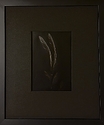I just thought I would put this out there but is there really any need to expose and develop each image differently according to its contrast?
Unless you have two film backs (I use 120) surely it's just not practical. On a single roll, for example, for a high contrast scene, I expose for the shadows then -2 stops, and for a normal contrast scene expose from a mid-tone. I then develop to give me a mid/low contrast negative which gives me all the detail I need. And then, if I want a higher contrast result I simply print on a higher grade and visa versa. So, although it's good to have an understanding of the HC scene = overexpose/underdevelop and LC scene = underexpose/overdevelop principle, is it really necessary to worry about how to dev for each scene or to trouble yourself with 2 backs?
If you shot a linear film like Kodak TMX and later you scan then you may bend the curve in photoshop like you want... you only need to scan 16bits per channel and to edit properly, while making sure your shadows have enough exposure to record detail. This is a kid's game: if the scene has too much range then you end bending the curve (in Photoshop) in S shape, compressing toe and shoulder to have a good depiction on paper or in the monitor.
But problem happens when you have a high dynamic range (contrasty scene) and you want to use a pure optic process (darkroom) to craft a sound image in the traditional way. Tou may use a lowe contrast grade but then mids became dull, so at the end yo have tp do the same you did with photoshop: compressing shadows/highlights and allowing mids to have contrast enogh, what was a kid's game with photoshop may require true master printer in the darkroom.
Essentially, for a pure optic crafting you have to ways:
1) Crafting a negative that easily prints like you want, this commands mastering exposure and development techniques to craft that negative. Zone System takes advantega of the behaviour of classic films to compress highlights and shadows a allow printing easily your visualization.
2) Taking a well linear capture that would be more flexible in the printing, (for example) instead having detail compressed in the shoulder you conserve detail there, fully well recorded without any compression, TMX is linear even by +6 overexposure... but that well recorded detail does not print easy becuase when your contrast for the mids is ok then the highlights are blown "white", so you have to burn those highlights with a lower grade or use advanced (time consuming) techniques like HLM masking.
Both ways are good, and any intermediate strategy is also good... but when scene range does not fit in the paper it does not fit... obviously. We may clip what is does not fit, or we may compress the extremes of the range, then we can perform that necessary compression in the negative, in the darkroom or in photoshop...
When we play with development we are playimg with the first strategy. We not only change contrast, we also may "compensate", this is to selectively and partially arresting development in the highlights, for example Diafine des that, but also Stand development.
Often we don't use strategy 1 or two, but a combination.
...but keep in mind that modifiying development may be useful to modify tonality an grain structure. Not necessary mastering all that to craft great images, but those are powerful tools that we can use if we are brave enough

and we like.










 and we like.
and we like.